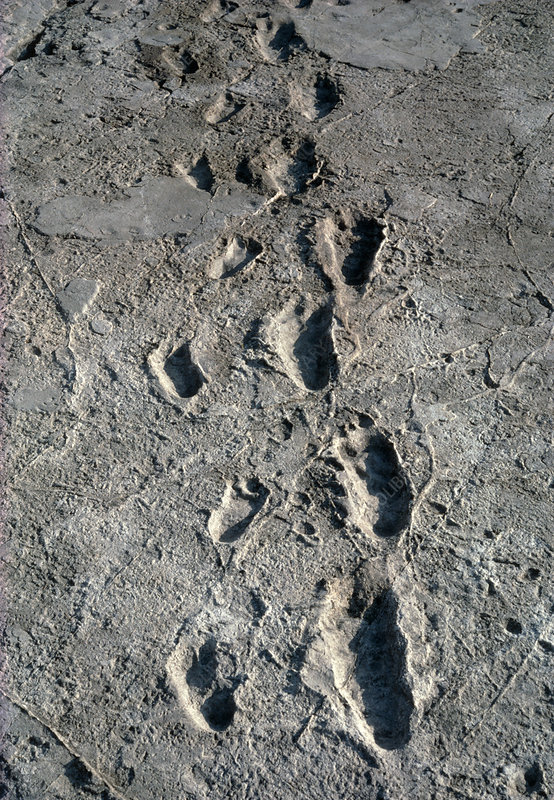
A project led by the University of St Andrews to protect the site of a 3.6-million-year-old human footprint at risk from climate change is one of 22 new projects to be supported by the British Council's Cultural Protection Fund.
The Laetoli footprint site in Tanzania, the oldest unequivocal evidence of human ancestors walking on two feet, and is currently at risk of being lost forever due to erosion caused by increasing storms and rainfall.
The Cultural Protection Fund project led by Professor Richard Bates from the School of Earth and Environmental Sciences will address the threats facing the footprint sites through digital documentation, training and community engagement.
It will also capture local stories, myths, dance and rituals which are linked to the footprint sites, ensuring that the heritage is permanently preserved and available to future generations. In Winde, a 19th Century slave warehouse complex faces similar erosion caused by rising sea levels. Both sites will be documented by the project led by the University of St Andrews.

The Laetoli project is just one of 22 pieces of cultural heritage that will be safeguarded thanks to newly supported projects announced today by the Cultural Protection Fund.
Funding of over £2 million will go towards protecting cultural heritage in Syria, Iraq, Kenya, Sudan, Ethiopia, Occupied Palestinian Territories, Uganda, Tanzania and for the first time, Pakistan and Nepal.
Led by the British Council in partnership with the Department of Culture, Media and Sport, the Cultural Protection Fund is the UK's main response to international cultural heritage protection. In addition to working with organisations and communities across 17 countries to protect tangible heritage – such as buildings and archaeological sites – the fund also preserves intangible heritage including music, traditional crafts and languages.
Stephanie Grant, Director of the Cultural Protection Fund at the British Council said:
"Since 2016, the Cultural Protection Fund has given grants of £50 million to 159 projects to protect cultural heritage in 19 countries, but the need for our work has never been greater. Last year alone we received funding requests of almost 20 times the budget for our entire current programme.
"We're incredibly proud and excited to support new organisations and communities, adding 22 brilliant projects to our portfolio and expanding our work into South Asia. These projects will research, document and restore a wide range of valuable cultural heritage and bring together thousands of people to explore and celebrate their cultural identities.
"This is a crucial time for the Cultural Protection Fund as we are in the final year of our current three-year programme. We're looking forward to sharing the successes and stories of our projects to make a strong case for the future of the fund."
Arts, Heritage & Libraries Minister, Lord Parkinson of Whitley Bay, said:
"We know that people, wherever they live, take immense pride in their cultural heritage. It is a fundamental part of who we are, which is why it must always be protected so that it can be enjoyed by future generations.
This year's successful projects will not only help to protect tangible heritage sites from the effects of conflict, instability and climate change, but also intangible heritage, such as the crafts and customs that are at the beating heart of communities around the world.
It's great to see the work of this fund expanding yet again this year, and I look forward to hearing more about the difference it makes to our shared heritage across the globe."
The Fund works with organisations and communities across 19 countries to protect tangible and intangible heritage from threats related to conflict and climate change. The range of heritage protected by the Fund includes buildings and archaeological sites, as well as music, crafts, traditions and languages.
Category Research






